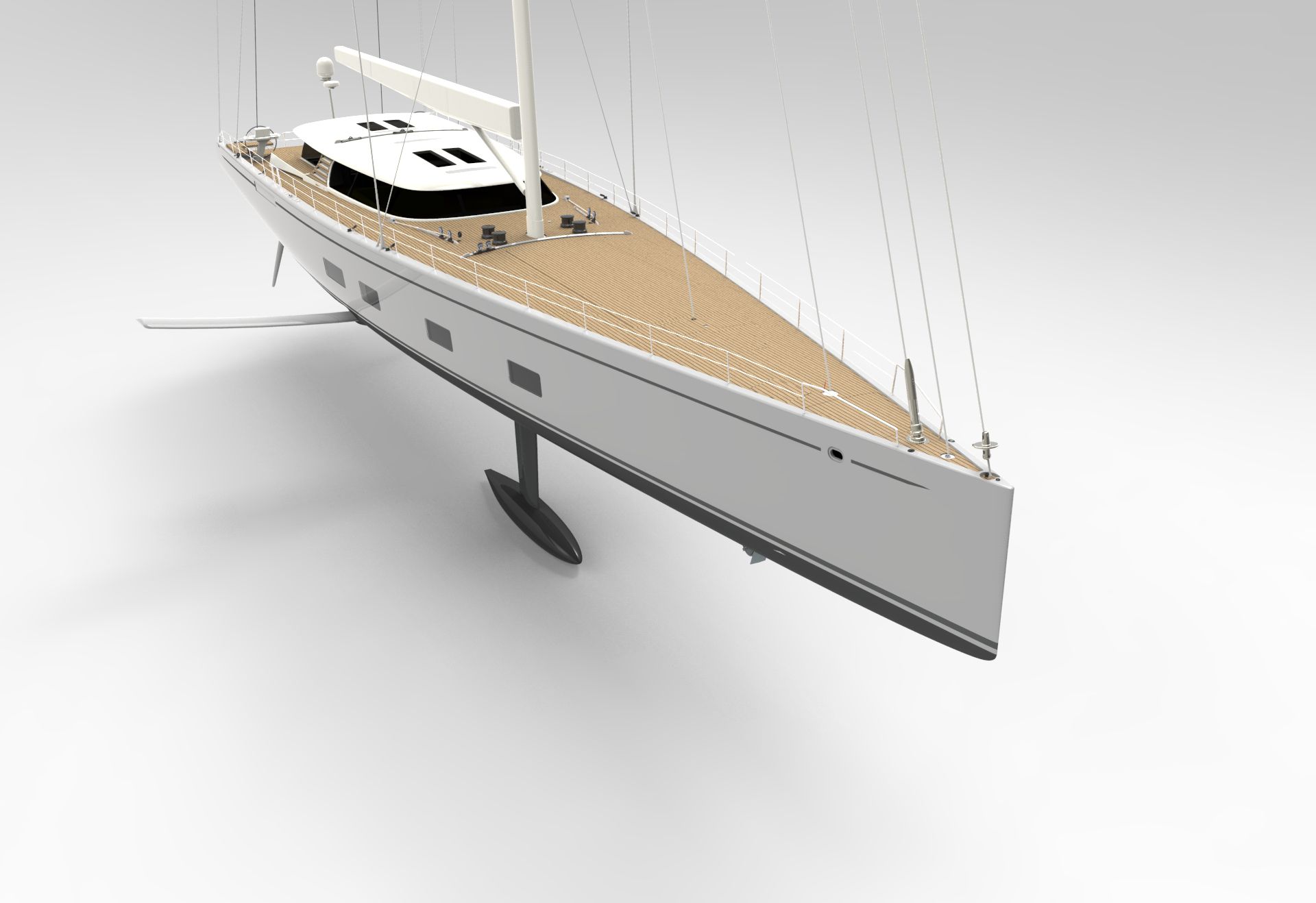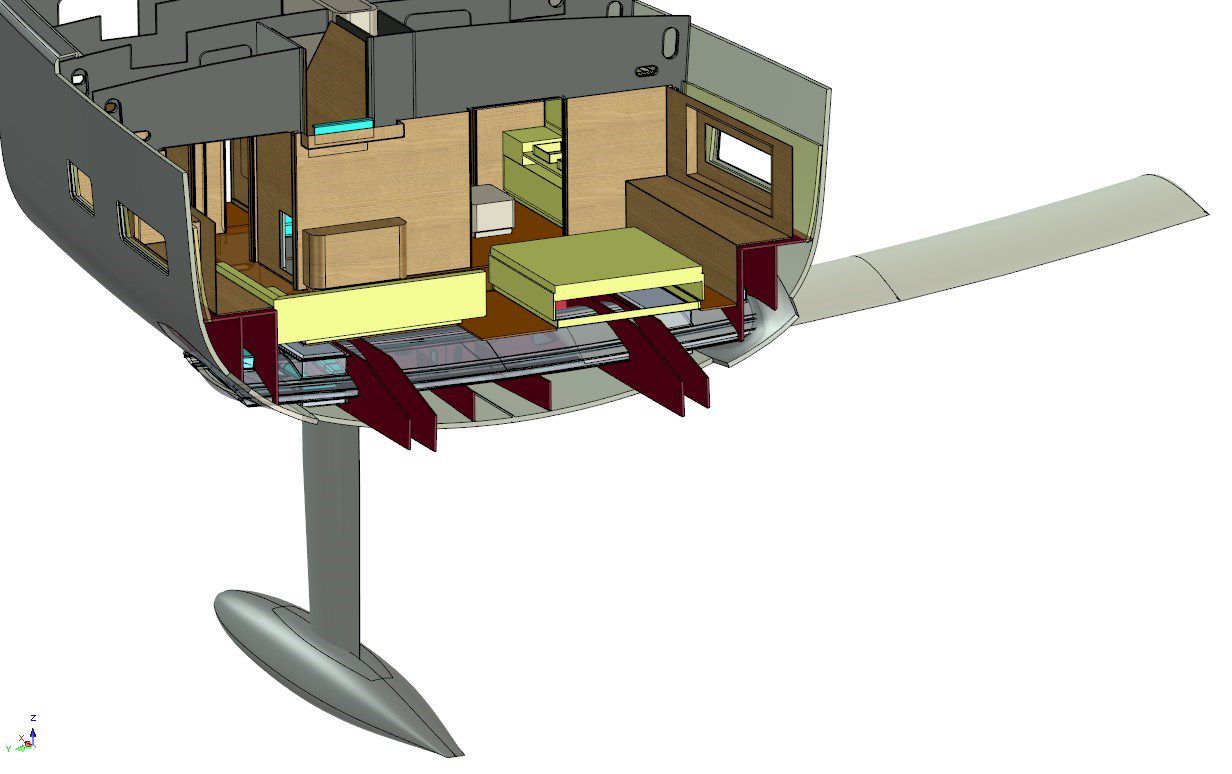Ground-breaking performance
One of the most advanced high performance super-sailing yachts ever built is under construction at Baltic Yachts in Finland and is on schedule for delivery in 2019.
15 November 2017
An impressive package of new technology used in Baltic Yachts’ latest carbon composite performance cruising yacht will make her a genuinely remarkable project, underlining the company’s position as the world’s leading builder of super-sailing yachts.
The carbon composite Baltic 142 Custom sloop, designed for fast, comfortable long distance cruising, is equipped with a performance boosting DSS foil which when deployed to leeward creates lift to dramatically reduce heel, increase speed, dampen pitching and enhance comfort.
Velocity prediction figures are indicating anything between a 5 and 20 per cent increase in speed with the foil deployed, depending on conditions.
Key to the entire project has been Baltic Yachts’ unique ability to build a relatively light yacht for her size by using advanced carbon composite technology. At 140 tons lightship the yacht’s displacement is critical to her performance.
The Dynamic Stability System (DSS), an athwartships, 9 metre long, moving foil, built into the yacht just below the waterline, has proved highly effective in smaller yachts, but this is the first time it has been used in a superyacht.
America’s Cup technology from Ben Ainslie Racing (BAR Technologies) in Portsmouth UK is being used to help design and engineer the roller bearing and drive systems which enable the foil to deploy under load and extend 6.3metres to leeward.
Roland Kasslin, Baltic Yachts’ head of Research and Development said: “The foil will run on four sets of 25 composite roller bearings contained in titanium cassettes. The outboard cassettes will bear the upward load and the inner cassettes the downward load when the foil is deployed.
“In conjunction with Farr Yacht Design and composite engineers Gurit, we have built a slight blister into each side of the hull to increase beam locally and provide a greater distance between the two sets of bearing cassettes to spread the loads more efficiently,” he added.
The design team has invested considerable resource into ensuring the foil is reliable in operation and is completely safe in all conditions.
The foil will be moved using an electric captive winch positioned at deck level.
Baltic Yachts is co-ordinating the design and engineering team including naval architects Farr Yacht Design in the USA, composite experts Gurit in the UK, Infiniti Yachts, who developed the DSS technology and ISOTOP Composite in France, who are building the carbon/foam foil.
The 9 metre long Dynamic Stability System foil runs beneath the owner’s cabin just aft of amidships using America’s Cup technology to deploy it.
An interesting consequence of using the DSS foil is the knock-on effect it has on the yacht’s righting moment which in turn affects the amount of ballast the yacht needs and has a bearing on rig design and sail plan. Building the lightweight, easily driven hull in carbon composites ideally suits the system. The Baltic 142 will displace just over 140 tonnes light ship.
Gordon Kay of Infiniti Yachts, whose team has been key in developing the DSS over the past eight years and is working with Baltic Yachts to optimise the 142’s performance, said: “We are in a new era of efficiency – sailing with DSS is about efficiency rather than brute force. This isn’t just about speed but increased stability, reduced heel angles and much less pitching making for a far greater level of comfort.”
He said that in 25 knots of true wind just aft of the beam, the Baltic 142 Custom could reach 25 knots of boat speed in flat water with about 9° of heel, more than 10° less than a conventional yacht and five knots or so faster.
Other features include a square-top mainsail, an automated running backstay system and two underdeck sail storage drums, one for a Code sail, the other for the staysail. Dutch carbon spar specialist Rondal is providing the mast and rig package.
North Sails is studying an innovative quadrilateral headsail designed with two clews. Its reduced girth measurement in turn reduces drag and the upper clew provides greater trim control.







